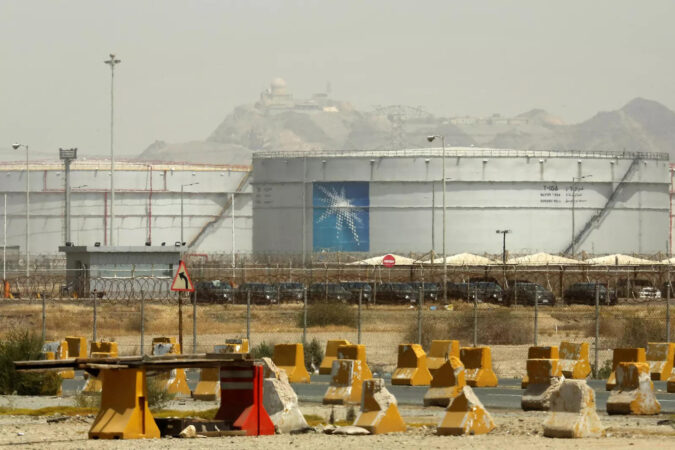DUBAI: Saudi Arabia said Sunday it will cut oil production by 500,000 barrels per day from May until the end of 2023.
The move would likely raise prices at the pump, further straining relations between Riyadh and Washington as the world copes with inflation fueled in part by the war in Ukraine.
The Saudi Energy Ministry said Sunday that the cuts would be made in coordination with some OPEC and non-OPEC members, without naming them. The cut is in addition to a reduction announced last October that infuriated the Biden administration.
The ministry described the move as a “precautionary measure” aimed at stabilizing the oil market. The cuts represent less than 5% of Saudi Arabia’s average production of 11.5 million barrels per day in 2022.
The earlier cuts — of some 2 million barrels a day — had come on the eve of US midterm elections in which soaring prices for gas and other basic goods was a major issue. President Joe Biden vowed at the time that there would be “consequences” and Democratic lawmakers called for freezing cooperation with the Saudis.
Both the US and Saudi Arabia denied any political motives, saying they were focused on maintaining a healthy market price.
Since those cuts, oil prices have actually trended down. Brent crude, a global benchmark, was trading at around $80 a barrel at the end of last week, down from around $95 a barrel in early October, when the earlier cuts were agreed.
Saudi Arabia’s state-run oil giant Aramco recently announced record profits of $161 billion from last year. Profits rose 46.5% when compared to the company’s 2021 results of $110 billion. Aramco said it hoped to boost production to 13 million barrels a day by 2027.
The move would likely raise prices at the pump, further straining relations between Riyadh and Washington as the world copes with inflation fueled in part by the war in Ukraine.
The Saudi Energy Ministry said Sunday that the cuts would be made in coordination with some OPEC and non-OPEC members, without naming them. The cut is in addition to a reduction announced last October that infuriated the Biden administration.
The ministry described the move as a “precautionary measure” aimed at stabilizing the oil market. The cuts represent less than 5% of Saudi Arabia’s average production of 11.5 million barrels per day in 2022.
The earlier cuts — of some 2 million barrels a day — had come on the eve of US midterm elections in which soaring prices for gas and other basic goods was a major issue. President Joe Biden vowed at the time that there would be “consequences” and Democratic lawmakers called for freezing cooperation with the Saudis.
Both the US and Saudi Arabia denied any political motives, saying they were focused on maintaining a healthy market price.
Since those cuts, oil prices have actually trended down. Brent crude, a global benchmark, was trading at around $80 a barrel at the end of last week, down from around $95 a barrel in early October, when the earlier cuts were agreed.
Saudi Arabia’s state-run oil giant Aramco recently announced record profits of $161 billion from last year. Profits rose 46.5% when compared to the company’s 2021 results of $110 billion. Aramco said it hoped to boost production to 13 million barrels a day by 2027.
